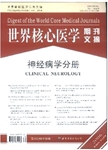O-(2-^(18)F-氟代乙基)-L-酪氨酸PET结合MRI可提高脑胶质瘤的诊断效能
O-(2-[^(18)F]fluoroethyl)-L-tyrosine PET combined with MRI improves the diagnostic assessment of cerebral gliomas作者机构:Clinic for Nuclear Medicine (KME) Research Center Jülich Leo-Brandt-Strasse 52425 Jülich Germany
出 版 物:《世界核心医学期刊文摘(神经病学分册)》 (Digest of the World Core Medical Journals:Clinical Neurology)
年 卷 期:2005年第1卷第8期
页 面:18-18页
学科分类:1002[医学-临床医学] 100214[医学-肿瘤学] 10[医学]
主 题:脑胶质瘤 L-酪氨酸PET MRI 诊断效能 乙基 氟代 鉴别诊断能力 诊断准确度 活检标本 组织学诊断
摘 要:MRI is commonly used to determine the location and extent of cerebral gliomas. We investigated whether the diagnostic accuracy of MRI could be improved by the additional use of PET with the amino acid O-(2-[18F]fluoroethyl)-L-tyrosine (FET). In a prospective study, PET with FET and MRI was performed in 31 patients with suspected cerebral gliomas. PET and MRIs were co-registered and 52 neuron avigated tissue biopsies were taken from lesions with both abnormal MRI signal a nd increased FET uptake (match), as well as from areas with abnormal MR signal b ut normal FET uptake or vice versa (mismatch).Biopsy sites were labelled by intr acerebral titanium pellets. The diagnostic performance for the identification of cellular tumour tissue was analysed for either MRI alone or MRI combined with F ET PET using alternative free response receiver operating characteristic curves (ROCs). Histologically,26 biopsy samples corresponded to cellular glioma tissue and 26 to peritumoral brain tissue. The diagnostic performance,as determined by the area under the ROC curve (Az), was Az=0.80 for MRI alone and Az=0.98 for the combined MRI and FET PET approach (P 0.001). MRI yielded a sensitivity of 96 %for the detection of tumour tissue but a specificity of only 53%, and combine d use of MRI and FET PET yielded a sensitivity of 93%and a specificity of 94%. Combined use of MRI and FET PET in patients with cerebral gliomas significantly improves the identification of cellular glioma tissue and allows definite histo logical tumour diagnosis. Thus, our findings may have considerable impact on tar get selection for diagnostic biopsies as well as therapy planning.



